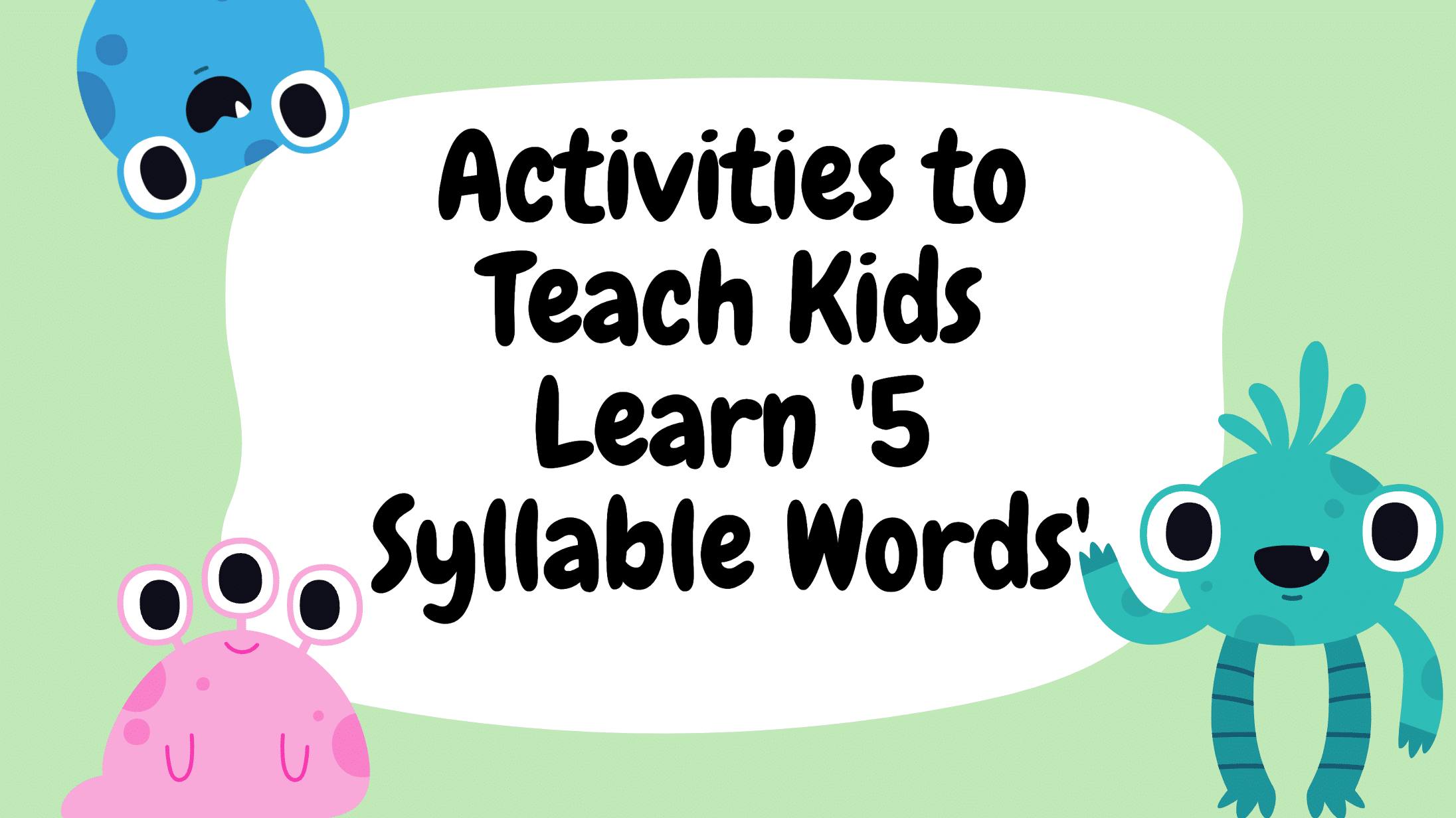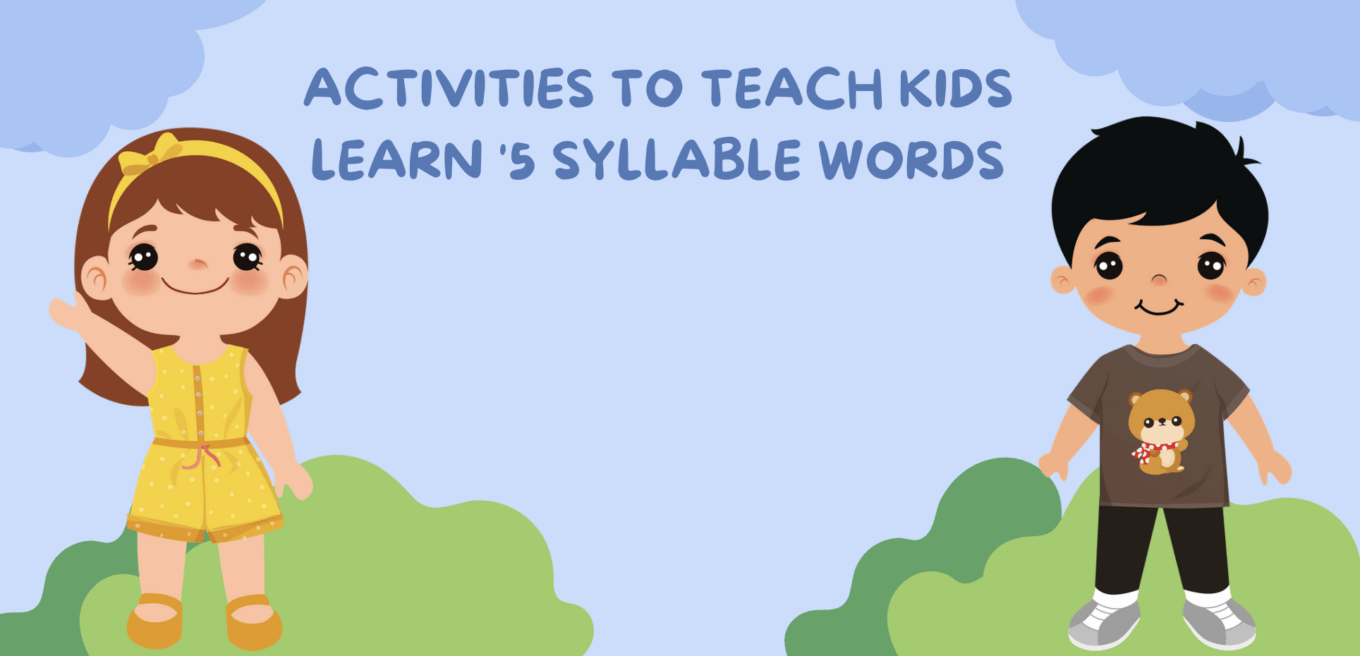Learning five-syllable words can be a fun and exciting challenge for kids. Incorporating engaging activities into the learning process can make it easier for children to grasp and remember these longer words.
By introducing 5-syllable words for kids through interactive games, puzzles, and exercises, parents and educators can help young learners expand their vocabulary and improve their language skills.
These activities make learning more enjoyable and help children develop a love for language and a curiosity to explore new words.
In this article, we will explore eight engaging activities that can help kids learn five-syllable words in a fun and effective way, setting them up for success in their future language endeavors.
What Is Syllable Awareness?
Syllable awareness is a crucial component of phonological awareness, which plays a significant role in helping children develop essential reading skills.
When kids learn to recognize and manipulate the syllables within words, they lay the foundation for future success in reading and language development.
Syllable awareness involves understanding that words can be divided into smaller chunks or syllables, each containing a vowel sound.
By engaging in fun and interactive activities that focus on 5 syllable words for kids, children can develop a strong sense of syllable awareness, enhancing their ability to break down longer words into more manageable parts.
This skill makes reading less intimidating for young learners and helps them develop a deeper understanding of language structure, ultimately setting them up for success in their reading journey.
How to Teach Kids About the Syllable Awareness

Teaching syllable awareness to kids can be a fun and engaging process, especially when focusing on 5 syllable words for kids.
One of the most effective ways to introduce syllable awareness is to clap or tap out the “beats” in words.
By saying a word slowly and emphasizing each syllable, children can learn to associate the physical action of clapping or tapping with the individual sounds within a word.
As kids become more comfortable with this concept, you can incorporate various multisensory activities to reinforce their understanding, such as using musical instruments, jumping, or even dancing to the rhythm of the syllables.
Additionally, integrating syllable awareness activities into daily routines, such as reading time or during playtime, can provide multiple opportunities for practice and mastery.
By making the learning process enjoyable and interactive, children can develop a strong foundation in syllable awareness, supporting their future reading and language skills.
Everything to Know About the 5 Syllable Words
A 5 syllable word consists of five individual sounds or beats, each containing a vowel sound.
These words are often longer and more complex than their shorter counterparts, making them an important focus for children developing their syllable awareness and reading skills.
When teaching five-syllable words, it’s essential to break the word down into its syllables, emphasizing each sound to help children understand the word’s structure.
For example, let’s take the word “extraordinary.” To teach this 5 syllable word, you would break it down into five distinct syllables: “ex-tra-or-di-na-ry.”
Encourage children to clap or tap out each syllable as they say the word slowly, focusing on the individual sounds.
This multisensory approach helps reinforce the concept of syllables and makes it easier for kids to identify and remember the word’s components.
Another engaging way to teach 5 syllable words is using visual aids or manipulatives.
For instance, you can create a simple chart with five columns representing a syllable.
Then, write the word “hippopotamus” vertically, with each syllable in its column: “hip-po-po-ta-mus.”
Have children read the word aloud while pointing to each syllable, or use small objects like buttons or beads to represent each sound?
By incorporating these techniques and focusing on 5 syllable words for kids, you can help children develop a strong understanding of syllable awareness, setting them up for success in reading and language development.
As they master these longer words, they’ll gain confidence in their abilities and be better equipped to tackle more complex language concepts.
8 Top Activities to Teach Kids Learn ‘5 Syllable Words’

Teaching 5 syllable words for kids can be made more engaging and effective through various interactive activities. Here are 8 top activities that can help children learn and master 5-syllable words:
1. Clapping Syllables
- How to play: Say a 5-syllable word slowly, emphasizing each syllable. Ask children to clap their hands for each syllable they hear.
- What to take care of: Ensure that the words chosen are age-appropriate and that children are clapping the correct number of syllables.
- What students learn: This activity helps children develop a sense of rhythm and understand that words can be broken down into smaller parts.
2. Syllable Hopping
- How to play: Write a 5 syllable word on the ground using chalk, with each syllable in a separate box. Have children hop on each syllable as they say the word aloud.
- What to take care of: Make sure there is enough space for children to hop safely and that the words chosen are not too difficult.
- What students learn: This activity combines physical movement with syllable recognition, reinforcing the concept of syllables in a kinesthetic way.
3. Syllable Sorting
- How to play: Prepare picture cards featuring 5-syllable words. Have children sort the cards into groups based on the number of syllables in each word.
- What to take care of: Ensure that the pictures chosen represent the words and that children are sorting the cards correctly.
- What students learn: This activity helps children develop categorization skills while reinforcing their understanding of syllables.
4. Syllable Drumming
- How to play: Provide children with small drums or rhythm sticks. Say a 5 syllable word and have children drum out each syllable.
- What to take care of: Make sure children are using the instruments safely and that they are drumming the correct number of syllables.
- What students learn: This activity combines music with syllable awareness, helping children develop a sense of rhythm and sound.
5. Syllable Building
- How to play: Write each syllable of a 5 syllable word on a separate card. Have children arrange the cards in the correct order to form the word.
- What to take care of: Ensure that the syllables are written clearly and that children are arranging the cards correctly.
- What students learn: This activity helps children understand how syllables work together to form words and develops their word-building skills.
6. Syllable Guessing Game
- How to play: Say a 5 syllable word, but replace one of the syllables with a clap. Have children guess the missing syllable to complete the word.
- What to take care of: Choose familiar words to children and ensure that the missing syllable is not too difficult to guess.
- What students learn: This activity encourages children to think critically about word structure and develops their listening skills.
7. Syllable Jump Rope
- How to play: Have children jump rope while saying a 5 syllable word, jumping once for each syllable.
- What to take care of: Ensure that children are using the jump rope safely and that they are jumping the correct number of times.
- What students learn: This activity combines physical activity with syllable awareness, helping children develop coordination and rhythm.
8. Syllable Matching
- How to play: Create a set of cards with 5 syllable words, with each syllable on a separate card. Have children match the syllables to form complete words.
- What to take care of: Ensure that the syllables are written clearly and that children match them correctly.
- What students learn: This activity helps children recognize individual syllables and understand how they work together to form words.
By incorporating these engaging activities into your lessons, you can help children develop a strong understanding of 5 syllable words and enhance their overall language skills.
Remember to keep the activities fun, age-appropriate, and challenging enough to maintain children’s interest and motivation in learning.
Wrapping It Up
Teaching 5-syllable words to children can be an enjoyable and rewarding experience when engaging activities are incorporated that cater to their learning needs.
Children can develop a strong foundation in understanding and mastering these longer words by focusing on syllable awareness and implementing interactive games, such as clapping syllables, syllable hopping, and syllable drumming.
These activities make learning fun and help children build essential language skills that will serve them well in their future academic endeavors.
As parents and educators, creating a supportive and stimulating environment that encourages children to explore and appreciate the beauty of language is crucial.
By doing so, we can help them develop a lifelong love for learning and set them on the path to success.
Let us know how informative you found our article and share it with others to help them teach their kids better.




